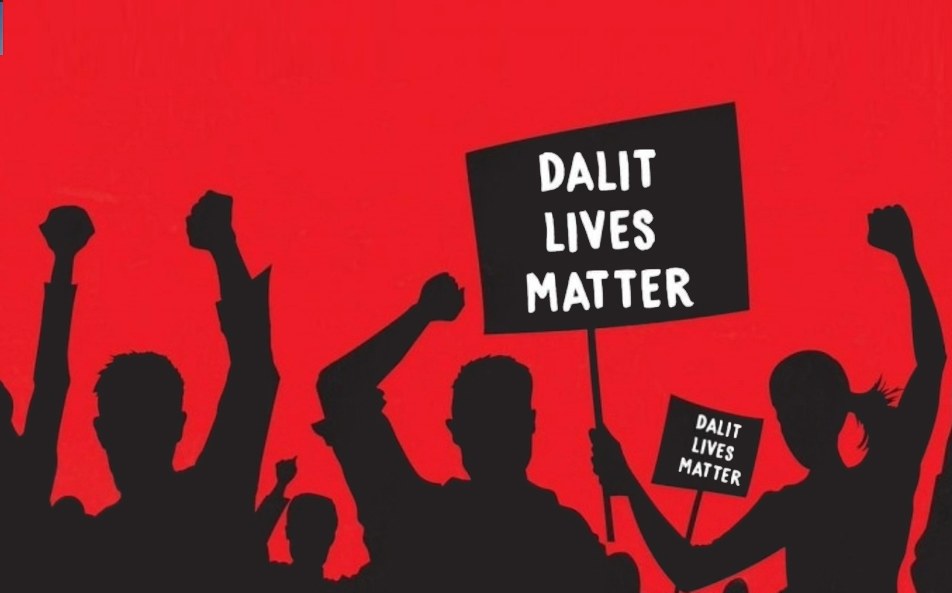US
Sat, Jan 03, 2026 | 02:20 AM IST
| Columbus | -7°C

The United Indian



Imagine being born into a world where the rules are already written against you. Where your last name decides whether you’re invited into a home-or thrown out of one. Where centuries-old prejudices follow you into schools, jobs, hospitals, and temples. And when you speak up, you’re not heard. You’re hushed.
This isn’t a chapter from colonial India. This is still someone’s daily truth in 2025.
Just this month, four Dalit youths in Madhya Pradesh were brutally tortured in police custody-stripped, beaten, and assaulted with chilli powder. One is still missing.
If this sentence jolted you, it should.
Because while India has made headlines for launching satellites, building billion-dollar startups, and hosting global summits-millions of its citizens are still fighting just to be seen as human.
This is the harsh but urgent reality behind the growing Dalit movement in India-a movement that refuses to stay silent, demands justice, and dares to reimagine equality.
This blog explores that movement-its past, present, and the fire that continues to burn in its name.
In India, nearly 17% of the population belongs to Scheduled Castes - commonly referred to in official terms as Dalits, and historically labeled as untouchables. The word “Dalit” means “oppressed”, and that identity has been forged not by choice, but by centuries of exclusion.
These figures don’t just call for reform. They demand a movement-a Dalit movement in India that not only resists violence but actively reclaims space, voice, and rights.
The brutal assault on four Dalit youths in Chhatarpur, Madhya Pradesh, has ignited protests led by the Bhim Army and rights organizations. The police were accused of stripping the men, beating them, and stuffing chilli powder into wounds. Legal action is pending, but the trauma is real and ongoing.
In a temple ceremony in Gujarat, Dalit families were intentionally excluded. Despite constitutional protections, untouchability still thrives under the radar-in temples, schools, and public spaces.
The Gujarat High Court has since taken up the case, but it’s a stark reminder that the fight for social equality is far from over.
Activists like Chandrashekhar Azad ‘Ravan’, recently elected as MP from UP, and grassroots leaders across the country are redefining the Dalit movement in India. Their demands are sharp: land rights, political representation, caste census, and dignity.
To understand today’s fight, we must revisit its bold beginnings.
Inspired by the Black Panther Party in the U.S., the Dalit Panther Movement emerged in 1972 in Maharashtra - founded by young Dalit intellectuals like Namdeo Dhasal and J.V. Pawar. It was a reaction against growing caste violence, discrimination, and cultural invisibility.
What made the Dalit Panther Movement powerful?
Though the original organization dissolved by the 1980s, its ideological fire still fuels today’s Dalit movements across India-from Maharashtra to Tamil Nadu.
The call for a national caste census is one of the strongest demands of the modern Dalit movement.
Without knowing who’s left out, we can’t fix what’s broken.
Organizations like AIDMAM (All India Dalit Mahila Adhikar Manch) are leading intersectional fights-fighting not just caste-based violence, but the double oppression of gender and caste.
Dalit women are:
Their leadership proves: the Dalit movement in India isn’t male-led, it’s woman-powered.
Mainstream media has largely failed the Dalit cause-often either underreporting atrocities or sensationalizing them without sensitivity.
That’s why platforms like The Mooknayak, led by journalist Meena Kotwal, are so important.
It’s one of India’s first Dalit-owned digital news platforms, committed to giving voice to the voiceless, and holding power accountable-without filters or favors.
Their motto? "If the media won’t speak, we will."
To truly honor the Dalit movement, India needs to:
✅ Conduct a nationwide caste census with transparent data.
✅ Enforce SC/ST protection laws strictly, with police accountability.
✅ Support Dalit-led institutions, from startups to schools.
✅ Incorporate caste in diversity and inclusion policies in corporates and government.
✅ Challenge everyday casteism-from WhatsApp jokes to workplace bias.
The Dalit movement in India is not just a protest-it’s a vision.
A vision of India where no one is born "untouchable", where caste is no longer destiny, and where dignity is not a privilege but a right.
To be silent now is to be complicit.
To be informed is to be empowered.
And to support the Dalit movement is to believe in the true idea of India-inclusive, equal, and just.
➡️ Follow Dalit-led media like The Mooknayak
➡️ Support organizations like AIDMAM and Bhim Army
➡️ Speak up-online, at work, at home
➡️ Share this blog to start the conversation
Because the real change begins when we all stop being silent.
#DalitMovement #DalitPantherMovement #DalitMovementInIndia #Untouchables #CasteNoBar #JusticeForDalits #AmbedkarLives
Q1. What is the Dalit movement in India?
The Dalit movement in India refers to the social and political efforts led by Dalits (formerly known as untouchables) to fight caste-based oppression, seek justice, and claim equal rights and dignity in Indian society.
Q2. What was the Dalit Panther Movement?
The Dalit Panther Movement, inspired by the Black Panther movement in the U.S., was a radical anti-caste organization formed in 1972 in Maharashtra. It aimed to fight caste injustice, discrimination, and violence through direct action, protest, and political activism.
Q3. Who are considered Dalits in India?
Dalits are people who fall outside the traditional four-fold caste system in Hindu society. Historically, they were known as untouchables and were subjected to severe social exclusion and discrimination.
Q4. Is caste-based discrimination still prevalent in India?
Yes, unfortunately. Despite constitutional protections, studies show that over 70% of Dalits still face some form of caste discrimination—in education, employment, housing, and even access to water or temples.
Q5. Why is the Dalit movement important today?
The movement is vital to challenging systemic inequalities and ensuring that India’s promise of equality and dignity applies to all, not just a privileged few. It also gives voice to historically silenced communities and highlights continuing injustices.
Everything you need to know
No FAQs available for this blog.
#weareunited
We respect your privacy. Unsubscribe at any time. Privacy Policy
Dec 23, 2025
TUI Staff
Dec 22, 2025
TUI Staff
Nov 17, 2025
TUI Staff
Nov 15, 2025
TUI Staff
Comments (0)
Be the first to comment!